About Sister Cities
Sister Cities International (SCI) was created at President Eisenhower’s 1956 White House conference on citizen diplomacy. Eisenhower envisioned an organization that could be the hub of peace and prosperity by creating bonds between people from different cities around the world. By forming these relationships, President Eisenhower reasoned that people of different cultures could celebrate and appreciate their differences and build partnerships that would lessen the chance of new conflicts.
The City of Santa Fe is a member of the SCI, and its program reflects SCI’s mission “To promote peace through mutual respect, understanding, and cooperation.” The Santa Fe Sister Cities program is implemented by a committee appointed by the Governing Body. The focus of the committee’s current work is on cultivating quality exchanges with our Sister Cities. Through Sister Cities, Santa Fe creates relationships based on cultural, educational, information, and trade exchanges, creating lifelong friendships that provide prosperity and peace through person-to-person “citizen diplomacy.”
Sister Cities
Bukhara is the capital of the Bukhara Province of Uzbekistan, acting as a beacon of cultural prominence, with its history reaching as far back as 6 BCE. Located on the Silk Road, the city has been exposed to thousands of years of cultural diffusion, with the results being shown in its magnificent design and beauty. Bukhara acts as a city museum. Its architectural structures serve as works of art in their own right, with over 140 architectural monuments to appreciate within the city. Home to many mosques and madrassas, the center of Bukhara has been named by UNESCO as a World Heritage Site due to its architectural and historical significance.
Santa Fe and Bukhara signed a Sister Cities agreement that highlights the many rich traditions and customs native to their regions, along with an intrinsic beauty that lies in their historic preservation and architecture. The cities continue to explore cultural opportunities between their communities.
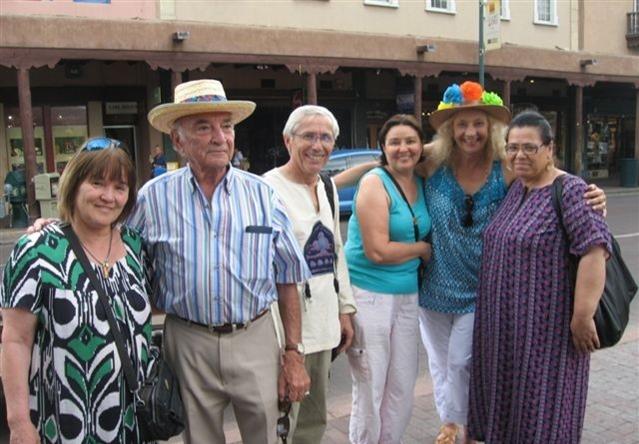
Sister Cities Committee members Gilbert Delgado and Carol Robertson Lopez, with artists from Bukhara
Holguin is located in the eastern part of Cuba just south of Cayo Largo, making it a tourist destination of choice for its warm temperatures during the winter months. The birthplace of Cuban music, Holguin, was founded as San Isidoro de Holguín in 1542 in the province of Oriente. It is documented that Christopher Columbus landed in Holguin in 1492 and said it was "the eyes of the most beautiful country that man has ever seen." The Holguin province's capital is home to multiple cultural centers, including the galleries Centro Provincial de Arte and Bayado, multiple museums, and the Marti Theatre. As the capital of the second most populated province in the country, a main attraction is a large crucifix on the hill of Loma de la Cruz. As visitors ascend its 465 steps, they can take in the beauty of the whole city.
A Sister Cities Agreement between Santa Fe and Holguin acknowledges that both share many rich traditions and customs native to their regions and should promote cultural and educational exchanges between the communities.

Codanza (Holguin, Cuba), Photo Credit Carl Moore
Icheon City is a village located in the Gyeonggi Province of South Korea. With a history shrouded in a ceramic culture that began over 5000 years ago, over 300 ceramic studios are centered around Sugwang-ri and Saum-dong in Sindun-myeon. This region has played a pivotal role in the city's reputation as the mecca of ceramics in Korea.
Icheon has been designated a "Special Ceramic Industry Zone" with an infrastructure developed for specific commercial and industrial enterprises. Home to the only ceramic-specialized high school in Korea, the city also houses the only ceramic institution in Korea, the Korea Institute of Ceramic Engineering and Technology (KICET). Craft education plays an important role in the community and is divided into two parts, a formal education, and a lifelong education. The World Ceramic Biennale, the Icheon International Sculpture Symposium, and the Icheon Ceramic Festival are all hosted in Icheon.
Santa Fe and Icheon signed a Sister Cities Agreement on November 18, 2013. Both cities have been awarded UNESCO designations, giving them a rich foundation for a Sister Cities relationship focusing on educational and cultural exchanges.
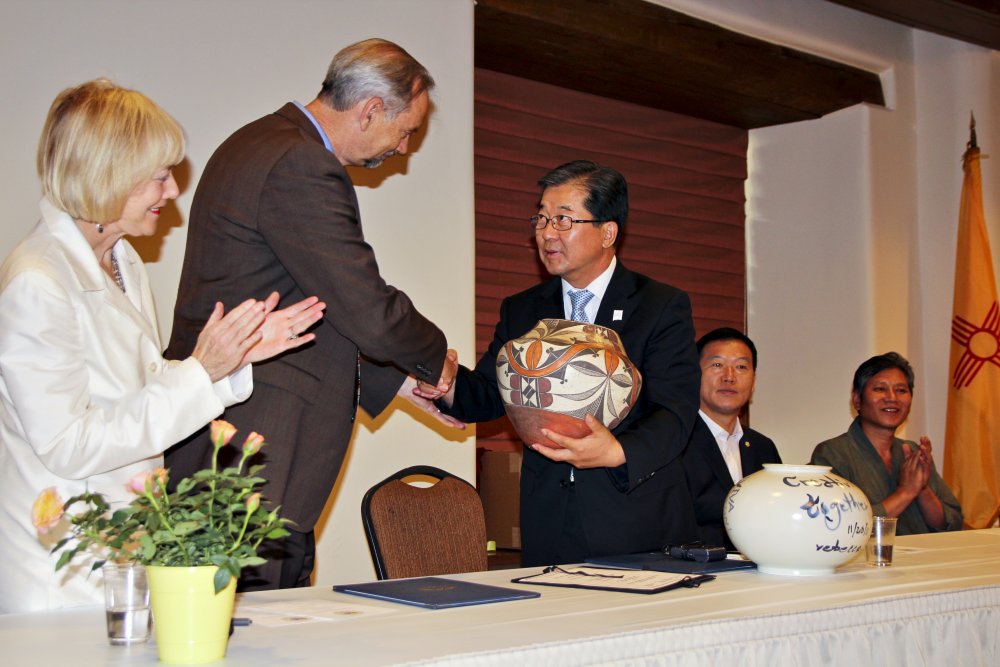
Former Mayor Pro Tem Rebecca Wurzburger, former Mayor David Coss, and Mayor Cho from Icheon
Livingstone is located in the Southern Province of Zambia, bordering Zimbabwe. The city has become a natural destination for travelers from around the world through its proximity to the Zambezi River and Victoria Falls. Named after David Livingstone, the first European to explore the area, the Kololo tribe described it as 'Mosi-oa-Tunya' – 'The smoke that thunders.' In more modern terms, Victoria Falls is known as one of the world's seven natural wonders. While the town has preserved much of its colonial character, it is a typical African town with a busy charm.
Livingstone's contemporary culture blends traditions from over 70 ethnically diverse people. More than 20 annual traditional ceremonies are performed throughout the year, providing valuable insight into the customs and culture passed down from generation to generation. Rich in scenery and heritage, Livingstone has become the tourist heart of Zambia.
In June 2012, a Sister Cities Agreement was signed between Santa Fe and Livingstone officials. The two cities agreed they share many rich traditions and customs native to their regions and the intrinsic beauty of their respective landscapes. Their agreement explores cultural and educational exchanges between the two cities.
Livingstone Tourism Association
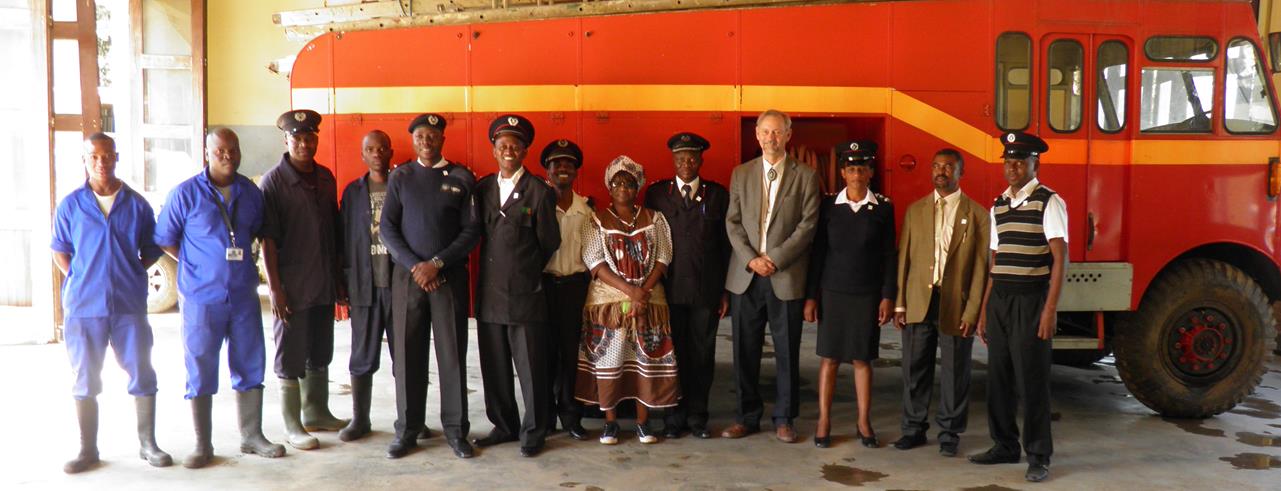
Mayor Coss and members of the City of Livingston Fire Department
Located in the southern part of Chihuahua, Mexico, with a population of over 101,000, Hidalgo del Parral was named after Miguel Hidalgo, who is considered the 'Father of the Country.' According to legend, Juan Rangel de Biezma picked up a rock on the Cerro la Prieta (La Prieta Hill), licked it, and proclaimed, “There is a mineral deposit here.” That deposit produced silver for 340 years and shaped Parral as a major mining settlement. Influenced by the historic presence of Spaniards, the city is recognized as one of the most European-fashioned cities in Mexico. Associated with several historical figures, Parral is most celebrated for its association with Mexican revolutionary leader Pancho Villa, who was assassinated there on July 20, 1923.
The most popular event of the city is the annual staging of the Murder of Pancho Villa, along with the annual Cabalgata Villista, a long-distance horse ride of thousands entering the city on horseback. Recreation props are used to re-enact the historical event, as well as coordinate the Cabalgata Villista.
In 1984, a Sister Cities Agreement was signed between officials from Santa Fe and Parral, acknowledging their many cultural and historical ties with the goal of strengthening cultural and educational exchanges between the cities.
Presidencia Municipal de Hidalgo del Parral
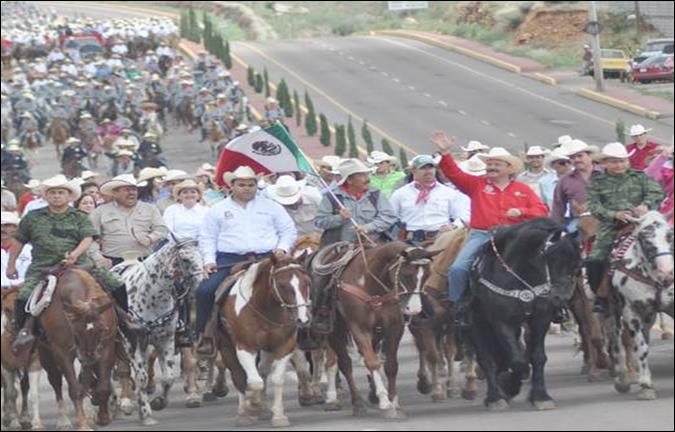
Cabalgata Villista
San Miguel del Allende is located in central Mexico in the far eastern part of Guanajuato. The total population is close to 140,000. A historical center, the city dates back to 1764, with many of its buildings dating from the 17th and 18th centuries. San Miguel de Allende is known for being the birthplace of Ignacio Allende, whose surname was added to the town's name in 1826.
Since the 1950s, San Miguel de Allende has developed a reputation as an artist's haven, attracting professional and amateur painters, sculptors, and printmakers to the classes and workshops. In addition to two major art institutions, Instituto Allende and Bellas Artes, art venues are found throughout the city. The city's largest celebration is the Fiestas de San Miguel de Allende. Held each year on September 29th, the Fiestas are named after the town's patron saint, the Archangel Michael.
Santa Fe and San Miguel de Allende formalized their relationship during a ceremony on October 24, 2013. The two cities share many similarities, historically and culturally, making them a natural fit for a Sister Cities relationship. The Sister Cities' relationship highlights economic, educational, and cultural exchanges.
San Miguel de Allende Office of Tourism
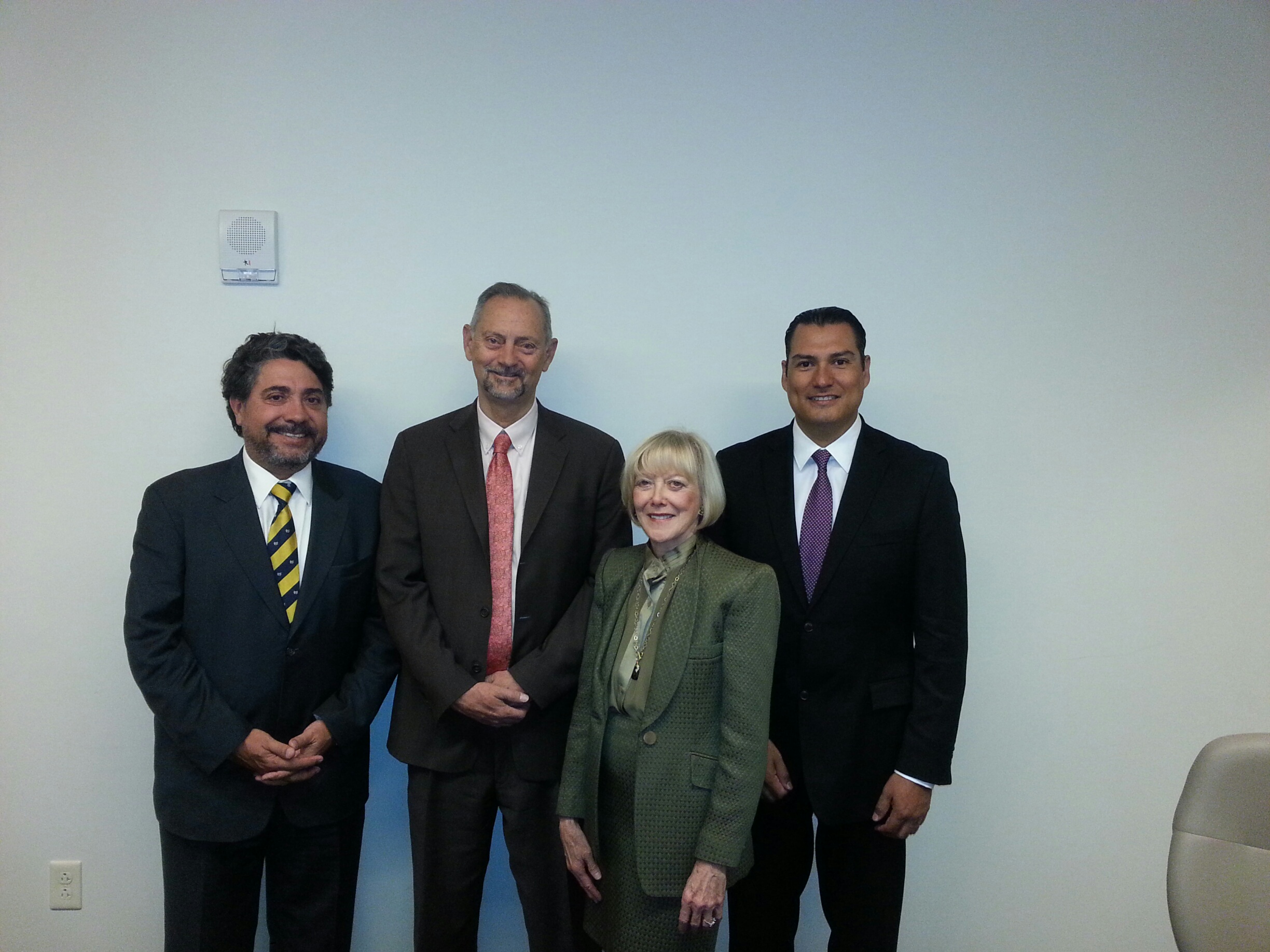
From left to right: Ricardo A. Garrido Sánchez, San Miguel de Allende Business Association; Santa Fe Mayor, David Coss; Santa Fe Mayor Pro Tem, Rebecca Wurzburger; San Miguel de Allende Mayor Mauricio Trejo Pureco.

From left to right: Consul Mauricio Ibarra Ponce de Leon of the Consulate of Mexico in Albuquerque; Director of Economic Development and International Affairs Maria Jose Garrido; City of Santa Fe Project Specialist Julie Bystrom; Santa Fe Sister Cities Committee Member Kim Song; and San Miguel de Allende Mayor Pureco.
Located in Southern Spain, Santa Fe is a small town with big historical significance. Known as the "Cradle of Hispanity," Santa Fe was the site of the Reconquista's culmination. One can thank this city for the existence of New Mexico's Santa Fe, as it was the meeting site of Catholic kings and Columbus to arrange funding for his travels to the East Indies. Although much of the original architecture of the city was destroyed in an earthquake, a few remnants still exist, namely the three monumental gates surrounding the area named "Loja, Granda and Savilla," The Church of Nuestra Señora de la Encarnación, which dates back to the 18th century, and The Hermitage of Cristo de la Salud which dates back to the 15th century.
Granada, Spain
The capital of the province of Granada, the city has taken the same name and is one of the large urban centers of Spain with a great cultural history. The city sits at the confluence of four rivers, the Beiro, the Darro, the Genil, and the Monachil. A popular tourist destination, Granada is home to the Alhambra, a Moorish citadel and palace, named a World Heritage Site by UNESCO in 1984. The Alhambra exemplifies the last of Moorish dominion and influence within Spain and the penetration of Islamic art into European culture. As such, it is one of Spain's most visited historical sites.
The Palacio de Generalife, the summer palace and country estate of the Nasrid Emirs, is beside Granada. One of the oldest surviving Moorish gardens, the Jardin de la Sultana, is inside. Originally the Alhambra and the Generalife were connected by a walkway, although now a ravine lies between the two. Although these are the most famous attractions in Granada, the city is home to many wonderful museums, gardens, and works of architecture.
Santa Fe de la Vega – Granada, Spain, was one of Santa Fe's first Sister Cities. The cities share many historical and cultural events and seek to strengthen their relationship through cultural, economic, and tourist-based exchanges.
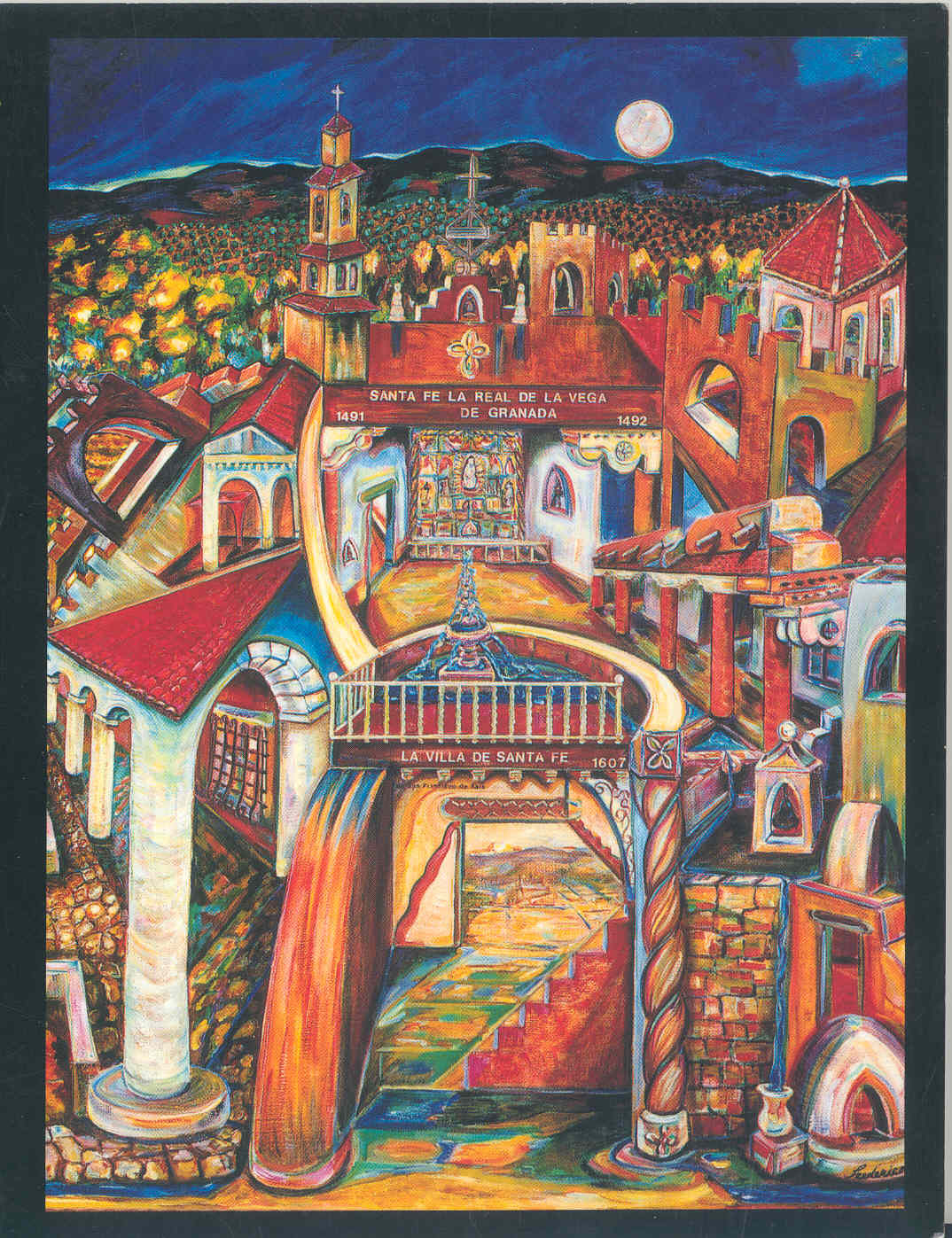
Santa Fe de la Vega, Spain and Santa Fe, New Mexico by Frederico Vigil
Sorrento is located in Campania, southern Italy, and overlooks the Bay of Naples. Rich in Greek and Phoenician history, the region was dominated by the Roman Empire until its collapse. At the start of the 18th century, Sorrento emerged as a popular tourist resort appreciated by visitors for its mild climate and flourishing countryside.
Sorrento is the birthplace of the poet Torquato Tasso, author of the Gerusalemme Liberata. Soviet writer Maxim Gorky lived in Sorrento in the 1920s. The town was also known as a favorite destination of famous Europeans such as Lord Byron, Keats, Goethe, Dickens, Wagner, Ibsen, and Nietzsche.
The City has remained a popular destination for its celebrations during the Christian Holy Week, with two main processions held on Good Friday: the Procession of Our Lady of Sorrows (or the "Visit in the Sepulchers"), organized by the Venerable Arciconfraternita of Saint Monica and, the Procession of the Crucified Christ, organized by the Venerable Arciconfraternita of the Death.
A Sister Cities Agreement was signed between Santa Fe and Sorrento in 1996. They share many similarities, and their relationship is strengthened through cultural, economic, and tourist-based exchanges.
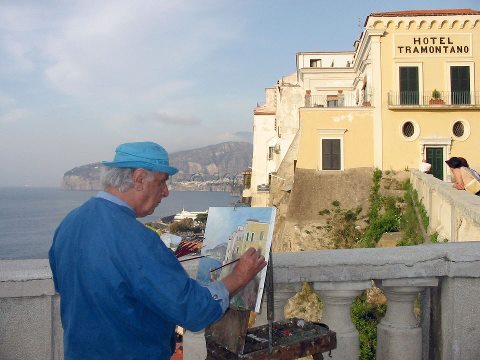
Domenico Fiorentino painted the Hotel Tramontano, which has hosted many artists and writers over the centuries. Photo Credit: Luigi De Pasquale.
Tsuyama City is located at the top of Okayama Prefecture, bordering Tottori Prefecture and Hyogo Prefecture. The city, known for its rich history and culture, is famous for the 17th-century Tsuyama castle, which was destroyed in 1874. The castle ruins, said to rival that of Himeji Castle in neighboring Hyogo Prefecture, remain one of Tsuyama's main tourist attractions along with Joto Street, a narrow street of old, traditional buildings that were once part of the pilgrimage route from Kyoto to Izumo, and Shurakuen Garden, Sakura Shrine, Yayoi Village. The city is one of Okayama's largest agriculture areas and is known for the many wonderful festivals held throughout the year: the Blossom Festival, held in early April; the Gongo Festival, the first Saturday and Sunday of August; Tsuyama Autumn Festival, mid to late October; the Lion Dance Festival, October 17, and Old Izumo Street Festival, beginning in November on Sunday.
Santa Fe and Tsuyama signed a Sister Cities Agreement commemorating their cultural similarities. They strengthen their relationship through cultural, economic, and tourist-based exchanges.
Japan National Tourism Association
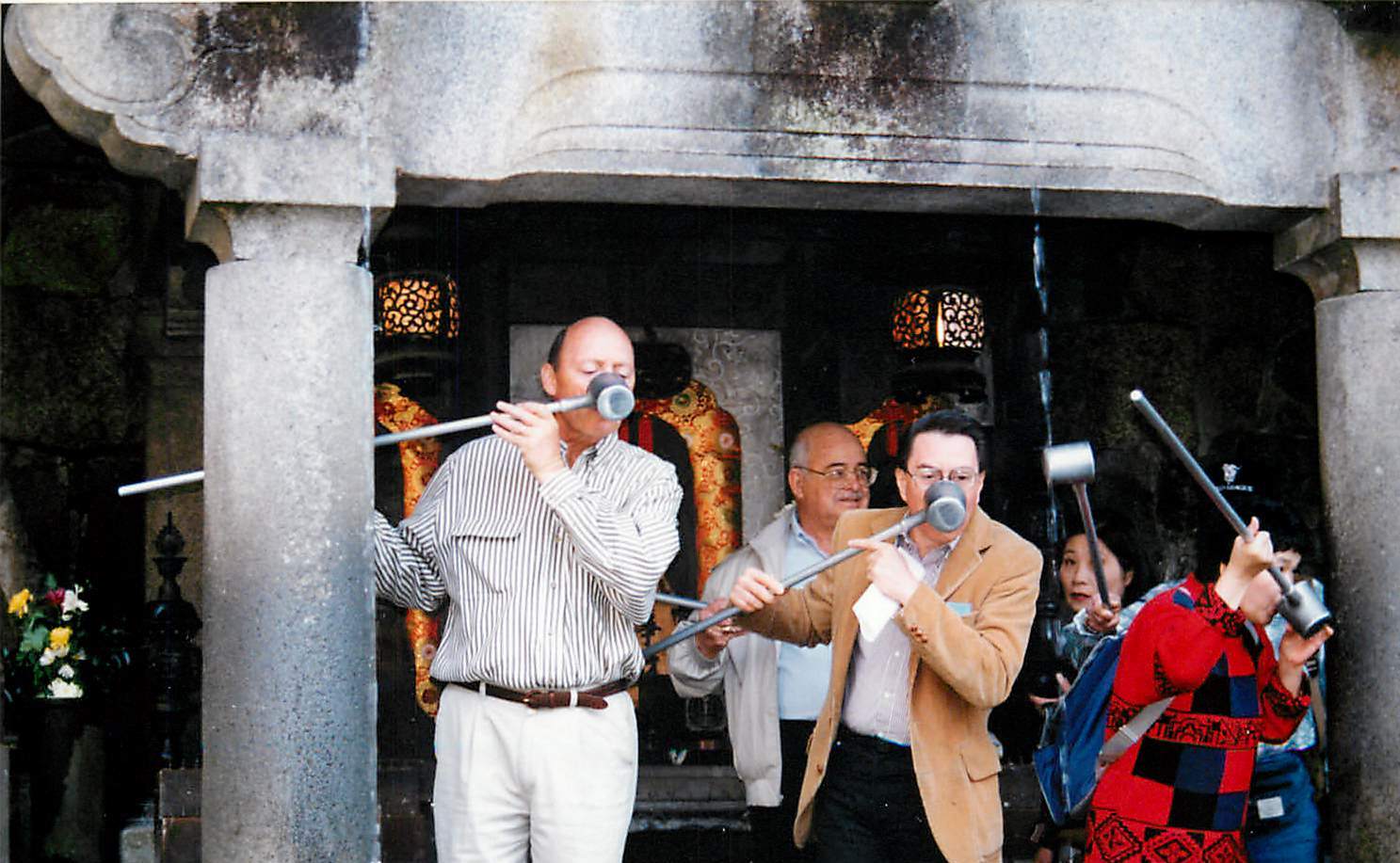
Delegates from Santa Fe visited Tsuyama, Japan, in April 1995—former mayor Larry Delgado, left; Arthur Olivas, center, and former city councilor Art Sanchez.
Zhangjiajie is located in the Hu'nan Providence of south-central China. With four areas under its jurisdiction, the Yongding District, Wuling District, Cill County, and Sangzhi County, it is said that Zhang Liang, a famed strategist of the Western Han Dynasty (206 BC-24 AD) founded Qingyan (now Zhangjiajie) Mountain and claimed it as an ideal refuge to escape Liu Bang, the First emperor of the Han Dynasty. The city is named after Zhang's descendants, who are still believed to live in the region.
In 1992, Zhangjiajie was designated as a UNESCO World Heritage Site. Home to three major ethnic groups, the Tujia, Bai, and Miao people, retain much of their traditional culture, including language, festivals, clothing, and architectural styles. Zhangjiajie hosts several annual celebrations, including the Spring, Lantern, Torch, Mid-Autumn, Dragon Boat, Buddha Bathing, and Zhangjiajie International Country Music Festivals. The city has become a major destination for tourism with its beautiful mountains and unique cultural heritage.
In October 2009, Santa Fe and Zhangjiajie officials signed a Sister Cities Agreement acknowledging that both cities share many cultural and historical similarities. Their relationship seeks to strengthen cultural, educational, and tourist-based exchanges.
Zhangjiajie: China's National Park

Carol Robertson Lopez, Chair of the City of Santa Fe Sister Cities Committee, and Jeff Case, Ph.D., meet with young students during a visit to Zhangjiajie.
Sister Cities Committee
Carol Robertson Lopez, Chair
Stuart Ashman
Dr. Jeff Case
Kerri Cottle
John Di Ruggiero
Judith Moir
Satori Murata
Ron Press
John Self
Devendra Narayan
Ex officio:
Peter Ives
